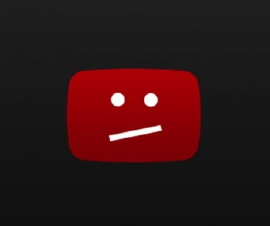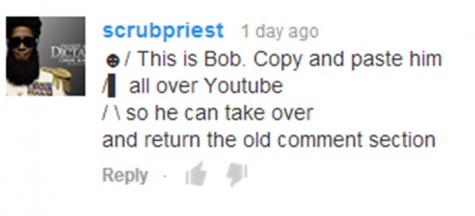The Dark Side of a Site

March 18, 2016
YouTube is held as a pinnacle of the internet’s viral media. A place where the creative are encouraged to share their products with millions. Anyone could make it big–they just need the right idea and attitude.
That’s the idea at face value.
While the site works and many enjoy it, YouTube has its fair share of issues.
The comment section of YouTube is infamous as one of the most vile parts of the internet. Open nearly any comment thread and you’ll be exposed to any number of racist, sexist, and generally degrading voices. It’s a chaotic mess: you’re just as likely to see a copy-and-pasted pictures made of slashes and dots as you are to see users debating whether or not people should be allowed basic freedoms.

In fact, YouTube popularized the flame war. Like bacteria growing in a petri dish, every day more and more violent exchanges take place on the site.
Most sites have some system of moderators and filters to prevent such disarray; YouTube doesn’t. It’s such a huge site that they seem to have given up completely, barring the ability to flag comments. Anyone can say anything, and with the anonymity the internet provides, this usually doesn’t go well. People can say any kind of vile thing they want without having to face consequences.
YouTube has always received criticism for this feature and its wildly offensive and uncontrollable content. Though they’re finally trying to take a few steps toward fixing the problem, why wasn’t it addressed sooner?
Much of the same happens with videos; while the idea of a site where you can share virtually anything sounds enticing, when put into practice there are some major issues.
While some videos will eventually be taken down for being too explicit, many get left on the site. Sure, you find your favorite musician’s newest music video among the endless seas of content, but you could also find a video of someone’s trip to the bathroom.
Even the biggest internet stars contribute to the problems on YouTube. In the genre of ‘Let’s Play’, contributors stream their playthroughs of video games and their own commentary. YouTuber Pewdiepie, a Let’s Player, boasts the most subscribes on YouTube. However, sit down to one of his videos and you may be immediately compelled to close the tab.
Most of his videos feature the same basic thing: Pewdiepie screaming over a ‘shocking’ game, usually spouting obscenities that range from swearing to full on rape jokes — the later he even made into a song.
Though he’s apologized for some of his past actions, he still has–and continues to stoke–a fandom that’s completely out of control. It’s not surprising that his fans have such notoriously bad behavior–his key demographic is 12-13 year olds. These kids are ready to defend him by any means necessary–usually by turning on caps lock and cussing out whoever has upset them.

Though some things are definitely a matter of taste, this is a highly vulnerable demographic being influenced. Things can go wrong very quickly when someone is seen only through the lens of an internet persona.
There are more than a few reports of Let’s Players attempting to extort sexual content from younger fans. Even worse, their other fans believe them when they claim that these actions were out of some sort of charity to make children feel better about themselves, or that the victims were actively trying to seduce them.
YouTube wasn’t directly at fault here, but it was a platform that gave them stardom and a fan base. When these reports get out, there was no news of any investigation nor was there any form of suspension put on the accounts. Instead, the accused are free to continue as usual.
Cases like these are the horror stories of the internet. They’re something we’ve always been warned about, but usually brushed off as the anxious ramblings of a generation that didn’t understand the issue.
Even barring the extreme cases, YouTube easily has enough questionable content to raise a few eyebrows. Currently, a new premium deal called Youtube Red has inspired much disgust. It’s like any other monthly deal — pay for a premium account, ads disappear, and you get more features.
But many users claim that the system changes not only hurt content creators, but extort those who just want to be able to listen to music on YouTube while using other apps. Add on the cost of $9.99 per month, and the worth just spirals downward.
So, should YouTube be boycotted? Of course not, as it still offers the internet a lot. But it could definitely use a few touch-ups to keep things sane. Its users and site alike could benefit from some simple ideas being put into play. YouTube owes its continued popularity to its fans, and it’s not that much to ask that they’re given the best experience possible.




